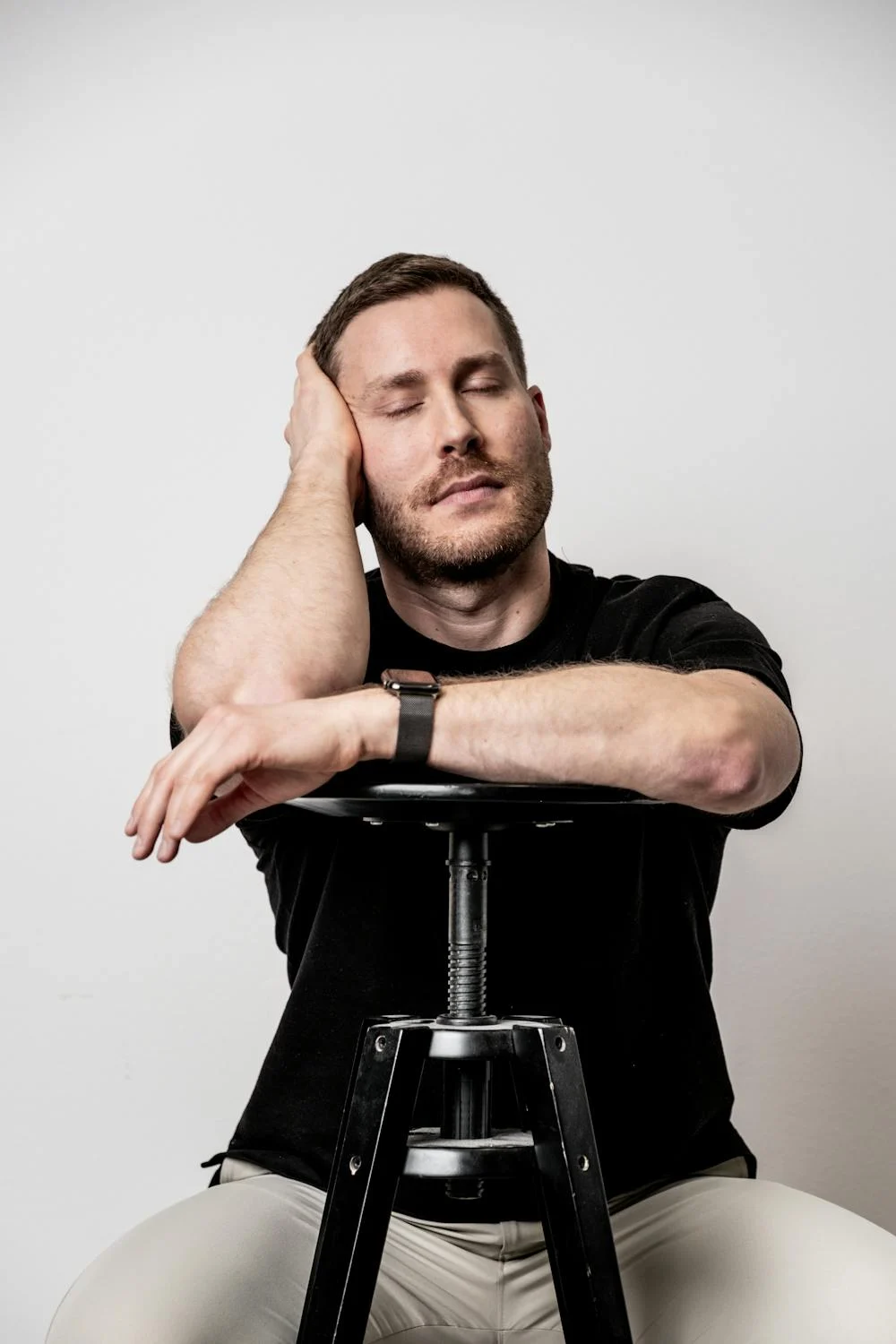Why The Fittest People Still Get Fatigued: A CO2 Explanation
It’s a scene that feels almost contradictory. A person who runs marathons, lifts heavy weights, and spends weekends scaling cliffs collapses...

It’s a scene that feels almost contradictory. A person who runs marathons, lifts heavy weights, and spends weekends scaling cliffs collapses on the couch by evening, feeling just as drained as someone who hasn’t left the house all day.
Muscle tone? Fantastic.
Endurance? Impressive.
Energy? Mysteriously missing.
How can someone with such a strong body feel so weak on the inside? The answer doesn’t lie in how much they move. It lies, surprisingly, in how they breathe.
And that answer points straight toward a silent epidemic, chronic hyperventilation, and a biological regulator we often ignore: carbon dioxide (CO2).
Let’s explore this misunderstood link between fitness, fatigue, and the forgotten art of correct breathing.
The Fitness Myth: Strength ≠ Resilience
We admire athletes for their strength, speed, and stamina. It’s easy to assume that if someone can sprint a 5K or deadlift twice their body weight, they must be thriving internally.
But fitness and cellular health are not the same thing.
Underneath even the most sculpted exterior, there could be biochemical chaos brewing, caused by faulty breathing patterns that rob the body’s tissues of oxygen.
Oxygen deprivation? For someone who just finished a triathlon?
Yes, and it happens not because they’re not breathing enough, but because they’re breathing too much.
The Problem: Chronic Hyperventilation in Disguise
Hyperventilation is usually imagined as frantic, panicked gasping. But in reality, it’s often silent, habitual, and nearly invisible, especially in athletes.
Small signs, often brushed off, include:
- Mouth breathing during training or daily activities.
- Breathing heavily even while resting, especially while sleeping.
- Feeling the urge to take deep sighs or yawns frequently.
- Elevated chest movement rather than diaphragmatic breathing.
And here’s the catch: many athletic training regimens encourage hyperventilation. “Take deep breaths,” “suck in more air,” “breathe harder.” These cues seem logical but often deplete CO2 further, trapping oxygen and starving the muscles over time.
Fitness becomes a paradox. The more air you gulp, the less oxygen your cells can use.
Why CO2 Matters More Than You Think
When the body’s CO2 levels drop, a chain reaction of dysfunction begins:
1. Oxygen Blockage at the Cellular Level
Without adequate CO2, hemoglobin molecules cling stubbornly to oxygen, refusing to release it into the cells where it’s needed most. Muscles, brain tissue, and vital organs become oxygen-starved even when blood oxygen saturation looks normal.
2. Blood Vessel Constriction
CO2 acts as a natural vasodilator. Without enough of it, blood vessels constrict, limiting circulation. Reduced blood flow means slower recovery, muscle cramps, and, ironically, more effort needed for every movement.
3. Nervous System Overload
Low CO2 stimulates the sympathetic nervous system (the “fight or flight” response). Chronic over-breathing keeps the body on high alert, draining energy reserves and preventing true rest, even during sleep.
4. pH Imbalance
CO2 helps maintain the delicate acid-alkaline balance of the blood. Chronic hyperventilation can lead to respiratory alkalosis, an overly alkaline blood state, which creates symptoms like muscle twitching, dizziness, and, you guessed it, persistent fatigue.
How Even Top Performers Fall into the Hyperventilation Trap
High-performing individuals often push themselves harder than most. While this creates visible strength, it also fosters habits like:
- Forced Breathing During Exercise: Exaggerating breaths beyond what’s necessary.
- Overuse of Mouth Breathing: Particularly during cardio activities.
- High Resting Respiratory Rates: Breathing faster than 8-12 breaths per minute even at rest.
- Poor Recovery Breathing: Continuing to hyperventilate long after exertion stops.
Over weeks, months, and years, the oxygen-starvation effect accumulates silently, creating a slow, creeping erosion of endurance, mental clarity, and resilience.
It’s no wonder that even fitness enthusiasts report feeling sluggish, foggy, or “just off,” despite perfect lab results and clean bills of health.
Recognizing the Symptoms: Is Your Breathing Draining Your Energy?
Here are some signals that your breathing patterns, not your workout routines, might be draining you:
- You experience unexplained fatigue despite good fitness levels.
- You regularly feel short of breath even during simple activities.
- You yawn frequently or sigh deeply without meaning to.
- You have frequent muscle cramps or cold extremities.
- You suffer from disrupted sleep or wake up feeling unrested.
- You get dizzy or lightheaded when standing up or after exercise.
If several of these sound familiar, it’s time to look deeper, not at your muscles, but at your breathing.
The Buteyko Method: Breathing Less, Doing More
Developed by Dr. K. P. Buteyko, MD-PhD, the Buteyko Method isn’t a breathing technique aimed at getting more air. It’s a system for normalizing breathing, i.e., gently retraining the body to breathe less, not more.
This method restores CO2 levels, which in turn unlocks:
- More Efficient Oxygen Delivery: By raising CO2 in the lungs, the Buteyko Method enhances the Bohr effect, allowing oxygen to detach from hemoglobin more readily and nourish cells more effectively throughout the body.
- Stronger Circulation: Adequate CO2 levels promote natural vasodilation, ensuring blood vessels stay relaxed and wide, improving nutrient delivery and waste removal across all tissues and organs.
- Balanced Nervous System Responses: Restored breathing patterns help deactivate chronic “fight or flight” stress responses, strengthening parasympathetic (“rest and digest”) activation for better emotional and physiological resilience.
- Faster Recovery from Exertion: With better oxygenation and improved waste clearance, muscles repair more rapidly, inflammation subsides faster, and overall recovery time after physical or mental strain shortens significantly.
- Deep, Restorative Sleep: Normalized breathing reduces night-time hyperventilation and silent breathlessness, allowing for longer periods of uninterrupted deep sleep that rebuild energy reserves.
Rather than forcing the body to work harder, Buteyko Breathing teaches it to work smarter.
Small breath holds, nasal breathing at all times, breathing with minimal visible movement… these practices reshape internal chemistry without exhausting effort.
Over time, Buteyko students often find they can train harder with less fatigue, think more clearly under pressure, and maintain vibrant energy throughout the day.
The “Invisible Effort” That Changes Everything
The beauty of Buteyko Breathing is that it doesn’t require adding another grueling hour to your day.
Instead, it’s about refining something you’re already doing, i.e., breathing, until it finally supports your health instead of sabotaging it.
Breathing less, breathing gentler, breathing through the nose, breathing with stillness… these practices multiply the effects of every effort you already make to stay fit, healthy, and vibrant.
A Note on the Buteyko Breathing Normalization Training Course
At the Buteyko Breathing Center, students who wish to retrain their breathing fully can enroll in the comprehensive 2–4 month Buteyko Breathing Normalization Training Course.
This is not a collection of random techniques, but an individualized educational program designed to gently guide students toward correct breathing 24/7: awake, asleep, training, working, and resting. As a result, their automatic breathing patterns adjust to tolerate higher levels of carbon dioxide in the lungs, leading to improved oxygenation and increased energy levels.
The goal isn’t just temporary symptom relief (though the Buteyko Method does reduce and even eliminate symptoms) but a lasting physiological change that begins at the cellular level.
And for many, it’s the missing piece that transforms fitness into true, deep, resilient health.
Final Thoughts
Fitness is a beautiful thing.
Strength, endurance, and achievement are worth celebrating.
But without healthy breathing, even the fittest body will eventually falter.
By restoring CO2 balance, calming the breath, and respecting the intelligence of our physiology, we not only regain lost energy; we unlock a quality of vitality that no gym membership or personal best time could ever replace.
Breath is life. Breathe right, and life becomes abundant.
About the Author
This blog was written by Sasha Yakovleva, an Advanced Buteyko Specialist and co-founder of the Buteyko Breathing Center.
Originally from Russia, Sasha received her training directly from the source at the Buteyko Clinic in Moscow. Her distinguished teachers included Dr. K. P. Buteyko, MD-PhD himself, L. Novozhilova-Buteyko, and A. Novozhilov MD. This unique training places her among a select few globally who are fully authorized to teach the authentic Buteyko Method in its entirety.
Sasha has shared the life-changing Buteyko Breathing techniques with people across the globe. Her work has gained significant recognition, being featured in prominent publications like The New York Times, as well as on various television and radio shows. She is also the author of the insightful books Breathe to Heal and Adenoids Without Surgery.
Based in Crestone, Colorado, since moving to the US in 1998, Sasha continues to work with adults and children internationally, guiding them towards better breathing and well-being through the Buteyko Breathing Center.





